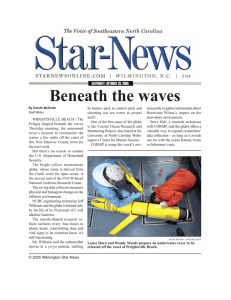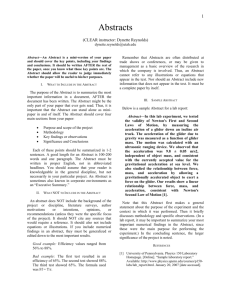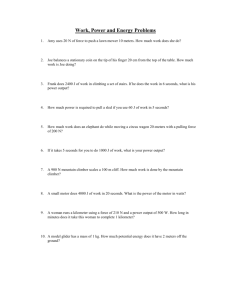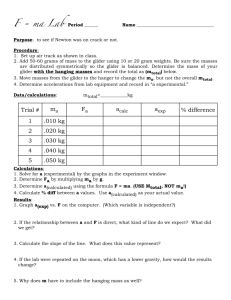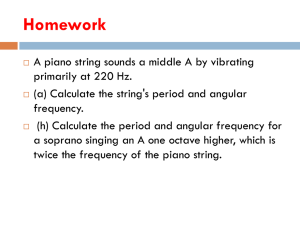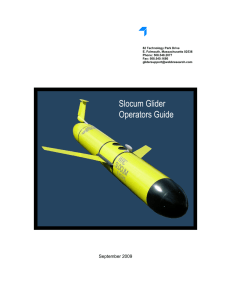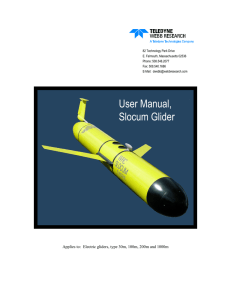Homework Set 15 B PH 112 – 10
advertisement
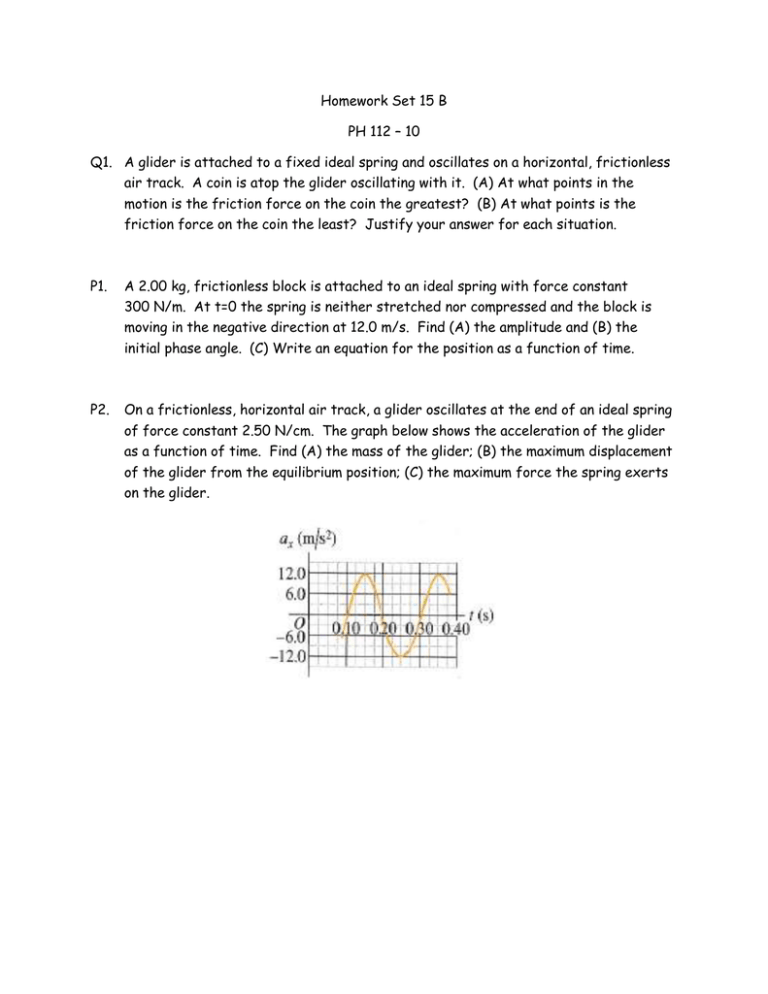
Homework Set 15 B PH 112 – 10 Q1. A glider is attached to a fixed ideal spring and oscillates on a horizontal, frictionless air track. A coin is atop the glider oscillating with it. (A) At what points in the motion is the friction force on the coin the greatest? (B) At what points is the friction force on the coin the least? Justify your answer for each situation. P1. A 2.00 kg, frictionless block is attached to an ideal spring with force constant 300 N/m. At t=0 the spring is neither stretched nor compressed and the block is moving in the negative direction at 12.0 m/s. Find (A) the amplitude and (B) the initial phase angle. (C) Write an equation for the position as a function of time. P2. On a frictionless, horizontal air track, a glider oscillates at the end of an ideal spring of force constant 2.50 N/cm. The graph below shows the acceleration of the glider as a function of time. Find (A) the mass of the glider; (B) the maximum displacement of the glider from the equilibrium position; (C) the maximum force the spring exerts on the glider. P3. A 1.50-kg on a spring has displacement as a function of time given by the equation: 1 𝑥(𝑡) = (7.40 cm) cos [(4.16 ) 𝑡 − 2.42] s Find (A) the time for one complete vibration; (B) the force constant of the spring; (C) the maximum speed of the mass; (D) the maximum force on the mass; (E) the position, speed, and acceleration of the mass at t = 1.00 s; (F) the force on the mass at that time. P4. A 0.500-kg glider, attached to the end of an ideal spring with force constant k = 450 N/m, undergoes simple harmonic motion with an amplitude of 0.040 m. Compute (A) the maximum speed of the glider; (B) the speed of the glider when it is at x = -0.015 m; (C) the magnitude of the maximum acceleration of the glider; (D) the acceleration of the glider at x = -0.015 m; (E) the total mechanical energy of the glider at any point in its motion. P5. An object is undergoing simple harmonic motion with period 1.200 s and amplitude 0.600 m. At t = 0 the object is at x = 0 and is moving in the negative x-direction. How far is the object from the equilibrium position when t = 0.480 s?
